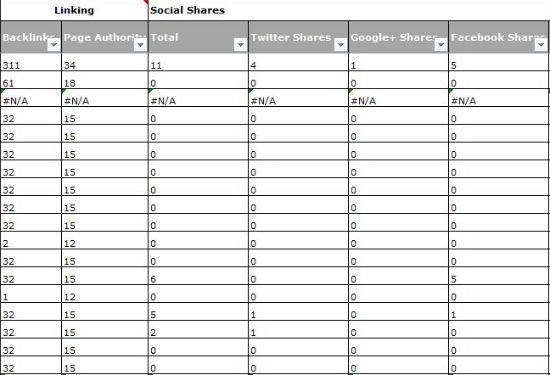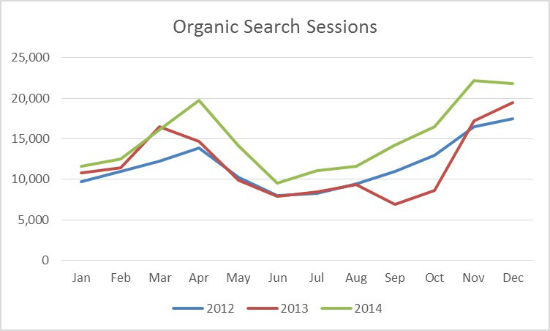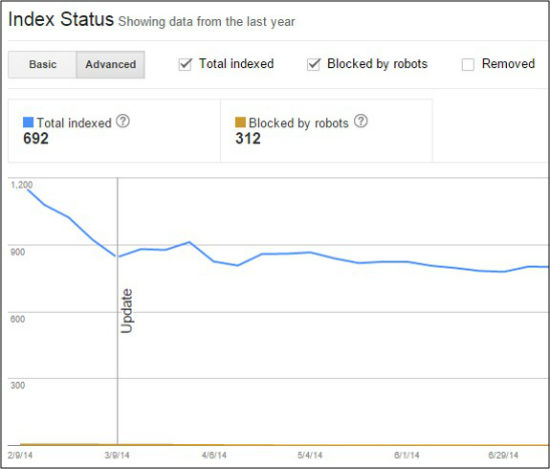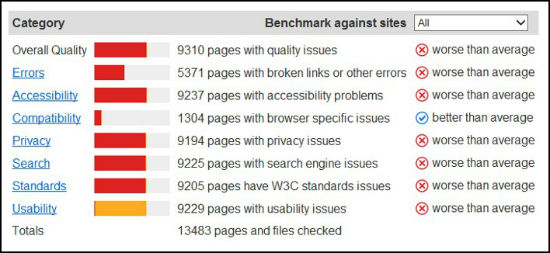
Sometimes implementing a website migration an essential part of doing business in a digital world. There are a variety of reasons why a company may choose to migrate from one site to another. Regardless of the reason, it’s important to remember that your website is your virtual calling card to prospective customers and sometimes a website migration is a necessary step in providing your customers the best possible user experience.
Like botched plastic surgery, a poorly executed website migration can bring a host of SEO problems, including making your site difficult to find in search engines, confusing to use or filled with errors that make the searchbots run away.
To ensure that your website migration goes smoothly and leads to improved business, follow these essential migration SEO recommendations:

Assess Your Analytics
In order to improve the user experience of your website, it’s important to first understand how visitors use your website now. Your website analytics platform can be a treasure trove for insights into historic usage patterns that can be essential to identifying issues, opportunities and sticking points that can be improved with a strategic site redesign.
Make sure you’re putting all of that valuable data to use by reviewing:
- Top-viewed website content – Make sure you aren’t cutting content your audience loves.
- Least-viewed website content – Even the best sites have some junk, take this opportunity to drop it or improve it.
- Click maps – Looking at where people are clicking (or trying to click) can help to design an intuitive and frustration free navigation interface.
- Paths to conversion – Regardless of what your website goals are (i.e. build subscribers, generate leads), understanding the paths which your visitors are taking to key conversion points can help to optimize these paths to make it easier and more enticing for visitors to convert into customers.
Web analytics tools:
- Google Analytics
- Google Search Console (formerly Webmaster Tools)
- Crazy Egg

Map Url Redirects
If your website has been around for any amount of time, there’s a good chance that you’ve built up search equity in the form of links and social shares. In addition to tight keyword optimization, these are the primary factors that help to increase the visibility of your content in search engines and since they are tied to the urls on your site, a migration in domain or url structure can snuff out the valuable search equity you’ve spent time and effort building.
To avoid starting from SEO square one with your new website, it’s important to strategically implement 301 redirects from your old page urls to the new ones, as this will effectively tell search engines where your new site pages are and that they are replacements for the old versions. In addition, it will ensure that people and bots who follow links to your old urls will end up in the right place rather than an error page.
In order to map redirects effectively, start by documenting for all your existing pages:
- URL
- Page topic
- Target keyword
- Organic search traffic (I recommend looking at a minimum 6 month time range)
- Links to page
- keyword rank
Also document for your planned new site pages:
- URL
- Page topic
- Target keyword
Once you have these two lists compiled, the next step is to map each page on your current site to it’s planned new location on your soon-to-be launched site. Redirect mapping isn’t rocket science, but it does take some thought (when done correctly). Fortunately, the previous exercise should give you all the information you need.
Of primary concern is topic relevance, in particular for highly trafficked and linked-to pages. When planning redirects, always consider what the experience of a visitor would be if they ended up on the redirect page rather than the original. Would it serve their needs as well or better than the old page? Would it feel confusing? Ideally the new page should be such a seamless transition that people don’t even notice the switch.
Redirect mapping tools:
- OpenSiteExplorer – Links and social shares
- Google Analytics – Traffic
- SEMRush – Keyword rankings
- Microsoft Excel – Convenient and functional map format (plus formulas and macros can make your life much easier)

Choose Ideal Timing
Even the best planned and executed website migrations come with some downtime and a temporary decrease in traffic (approx. 30%) and search rankings. It’s a price worth paying, as a new and improved website can drive significant improvements in business over an outdated and clunky site. However, it’s important to time the transition for when it’s likely to have the least amount of negative impact on your business.
The best time of year to implement a website migration is when business is likely to be the slowest. Companies vary in the degree of seasonality they experience, but most have a ‘slow season’. You probably already know when this is, but if not, take a look at your historic yearly web traffic or revenue patterns to determine when your slow season typically occurs.
As with time of year, it also makes sense to migrate your site on a slow day of the week during off hours. For many B2B focused websites, this is late on Friday or Saturday, but make sure to make the decision based on your own analytics, as every site and audience is different.

Post Migration
After making your new site live, it can be tempting to relax and celebrate, but hold off on breaking out the champagne just yet. In the period of time shortly following a website migration, it’s critical to keep a sharp eye out for issues or opportunities as well as monitor website traffic patterns to make sure it’s heading in a positive direction.
QA Like Your Site Depended on It (Spoiler: It Does)
In addition to checking your 301 redirects, it’s important to give a visual inspection of each page on your new site. For efficiency, you can check both simultaneously.
Make sure that each of your redirected pages:
- Goes to the correct new destination page
- Gives the correct server response (301)
- Loads quickly
- Directs to a page that renders correctly

XML Sitemap and Robots.txt
Like moving a brick and mortar business to a new location, it’s important to let people know where you’ve gone or else they may not be able to find you. On the internet, this is primarily accomplished via an xml sitemap, which tells search engines all about your new site and what it contains.
While you should have a properly formatted (and ideally auto-generated) xml sitemap on your site from day one, it isn’t enough to simply have it there, as search engines may not immediately find it without a little prompting. To avoid unnecessary delays, upload your xml sitemap to Google Search Console (formerly known as Google Webmaster Tools) and Bing Webmaster Tools.
Once uploaded, check back to make sure your sitemap isn’t resulting in errors from either Google or Bing and that the majority of your submitted pages have been indexed.

Analytics
As mentioned earlier, a temporary decrease of approximately 30% in website search traffic and visibility can be expected in the period immediately following a migration, but it’s very important to monitor closely to make sure it is indeed temporary and that things are headed in the right direction.
Make sure to keep a close eye on:
- Organic search traffic
- Visit bounce rate
- Conversion rates
- Keyword rankings

Crawl Errors
Generally, crawl errors like broken links, 404 not found pages or duplicate content will be at their lowest levels on a brand new site, but it’s still important to check and fix any errors, especially as this can be an indicator of a mistake during the migration.
There are many good automated crawl tools available, but make sure you use one that can find:
- Broken links and 400 error pages
- 500 error pages
- Duplicate content
- Inaccessible content
A website migration may seem like a lot of work, and it most certainly is (when done correctly). But the potential payoffs in improved experience for your site visitors and increased business for you are more than worth the investment.
While none of this is exactly rocket science, it is important to get it right, as the risks of a poorly executed migration can be significant. If you don’t feel that you have the resources or knowledge to correctly implement your website migration, I strongly recommend enlisting the help of a skilled digital marketing agency or expert to help.
What are your best tips for a successful website migration?


